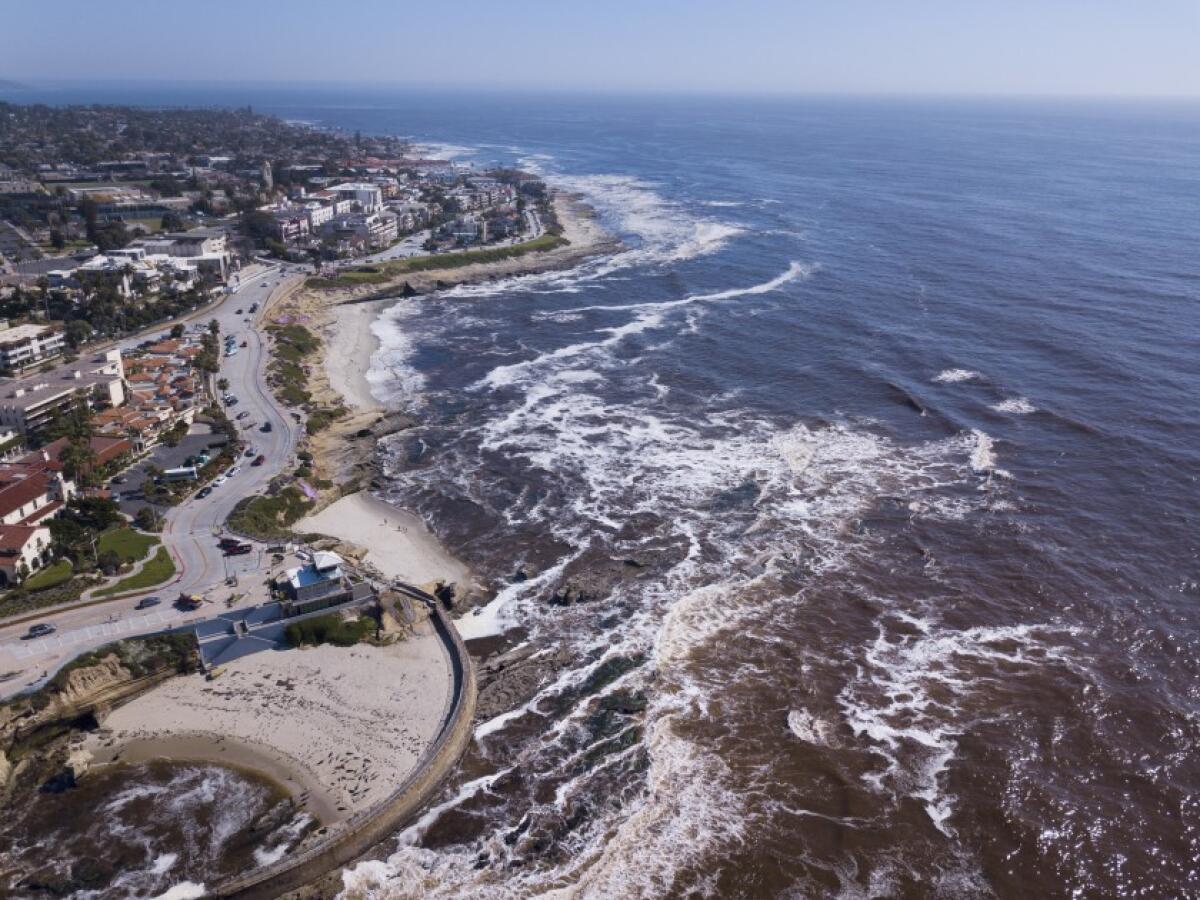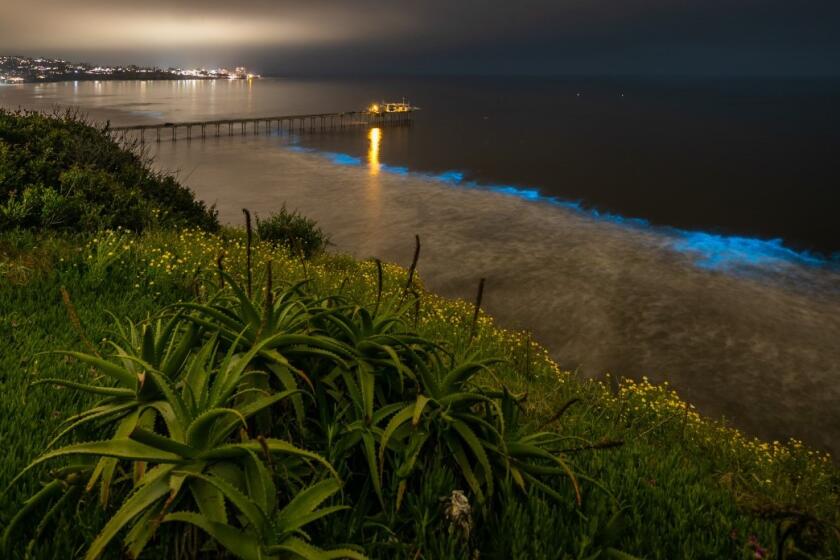When will the stink from San Diego County’s red tide go away? Scientists aren’t sure

UCSD researchers say a lack of coastal winds might be allowing the bloom to persist.
Scientists at UC San Diego said Wednesday that the red tide along the San Diego County coastline is lasting longer than expected, and they’re not sure when the algae bloom will stop producing a foul smell that’s sometimes noticeable miles inland.
In recent weeks, the naturally occurring phenomenon also has been killing everything from snails and sea cucumbers to calico bass and moray eels.
The red tide is not classified as a major public health hazard. But researchers say it can cause respiratory problems in some people, especially those with emphysema or asthma.
“There are tell-tale signs that this one might be dissipating. But we don’t have a good model to help us determine what will happen,” said Clarissa Anderson, executive director of UCSD’s Southern California Coastal Ocean Observing System, or SCCOOS.
The bloom began to arise in late March and SCCOOS researchers quickly noticed that it contained Lingulodinium polyedra, a single-cell organism that can produce brilliant flickers of neon light in the ocean known as bioluminescence.
The light is only visible in the dark, and many people in San Diego County visited local beaches to see it.
The blue glow lighting up the nighttime surf recently in the Scripps Pier area of La Jolla and other spots along the San Diego County coast is bioluminescence, a natural light show produced by tiny organisms.
That sense of enchantment has faded recently. Although most algae blooms are beneficial, this one is not. The L.poly organism carries a toxin that can kill fish and birds. The organism also depletes the amount of oxygen in the ocean, further stressing animals.
“We didn’t expect this bloom to go on for two months,” Anderson said. “They’re usually much shorter, and there usually isn’t a mass die-off of fish.”
The algae bloom produces a noxious smell as it dies. The odor is compounded by the chemical reaction that occurs when bacteria feast on the algae, researchers say. The sea breeze has been carrying the smell east of Interstate 5 in many parts of the county.
Though scientists aren’t sure why the red tide is lasting so long, Anderson said the lack of seasonal winds along the coast might be a factor.
“We’re not getting the kind of upwelling we normally get this time of year,” Anderson said. “We don’t have a lot of mixing in the water column, the kind that would help break up something like this.”
PB Monthly staff contributed to this report.

